Working in a Salt Mine
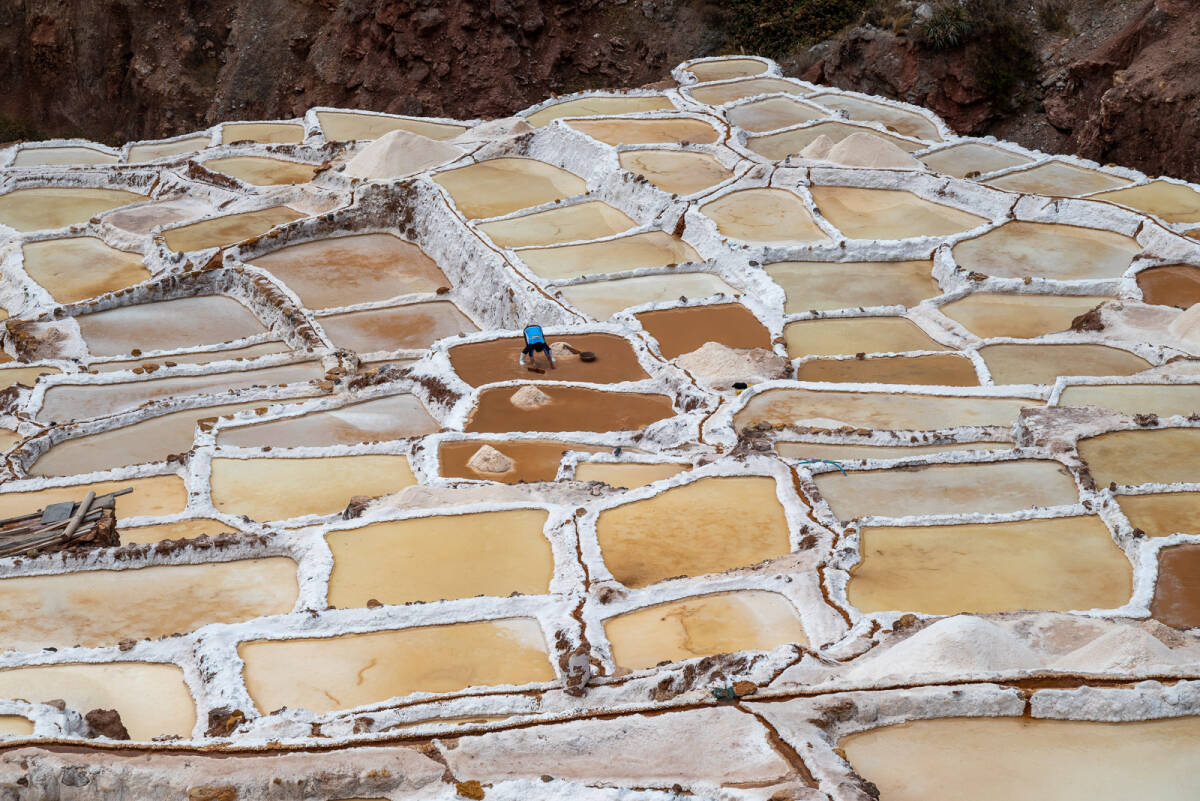
After leaving Moray, your ride takes you through the narrow streets of the small town of Maras before continuing on a bumpy road towards the mountains. You can see a small valley on your left, but you can’t see down into it.
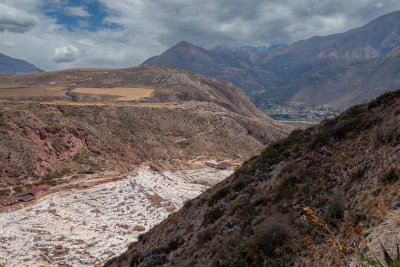
Soon you reach the entrance gate of Marasal. Unlike your other destinations which you already had tickets for, here your guide gets out of the van to pay the entry fee. This mine, she explains, is a private local enterprise which is not a part of the national tourism system, and thus all the money they make goes to the local community.
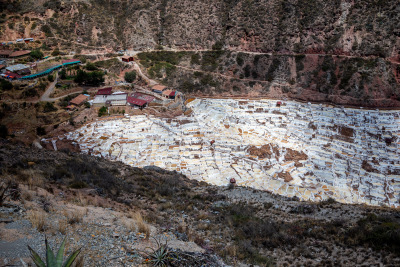
The van continues on and the road turns into the valley below, a very rough and narrow road with both tour vehicles and big trucks speeding in both directions. Soon you can see down into the valley and the spectacle of thousands of evaporation pools shining white in the midday sun. The van makes a stop at an overlook so you can get a good view.
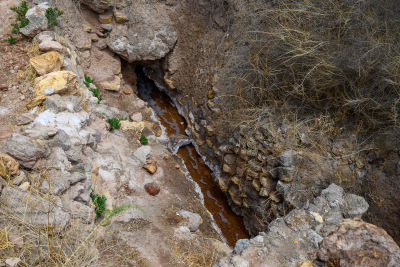
You continue down the road to its end at the mine complex. As you walk down toward the pools, your guide points out a small stream of brown water emerging from the mountain behind you. The water is guided through a series of small channels into and around the evaporation pools. This water is rich in minerals and when evaporated leaves behind the salt.
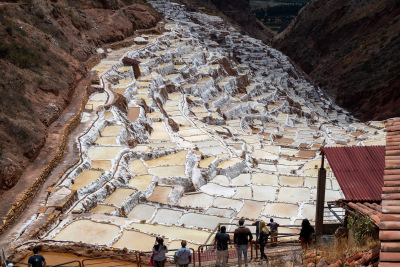
Just past the channel you are treated to an amazing view. There are over 6,000 small evaporation pools stretching far into the distance, each of which are full of white, pink or brown Peruvian salt. The edges are frosted with white salt crystals which almost look like snow. All of this comes from that small stream of water, and it has been happening for hundreds of years.
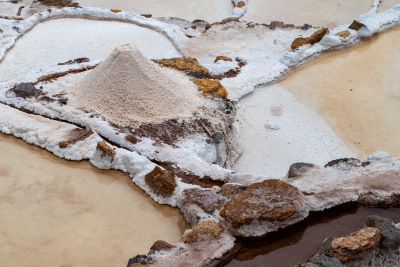
Your guide explains the labor intensive process by which the salt is harvested. When a pool is dried, it contains three layers of salt, brown at the bottom, pink in the middle, and white on top. Each layer must be carefully scraped off with simple hand tools so as not to mix the different colors, each of which contain a different chemical composition. The salt is left in a pile to dry some more before being bagged up and carried away for sale. She points out a worker in blue in one of the nearby pools who is engaged in this process. Right below the railing where visitors watch, you can see a pile of harvested salt sitting between the pools, but your guide explains that the salt in this area is contaminated by the visitors above and cannot be used.
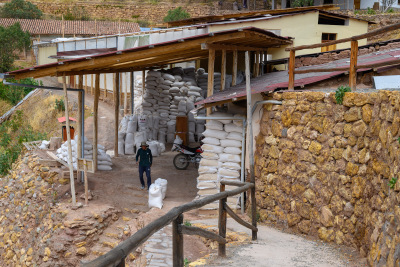
After a while spent looking at the beautiful scene, you head for the exit. You see an area where bags of salt are piled up and then pass some souvenir stalls. You consider buying one of the small bags of salt offered there, but then you think about returning home from Peru with a bag of white powder in your suitcase and decide against it. Instead you buy a refrigerator magnet then head back to the van.